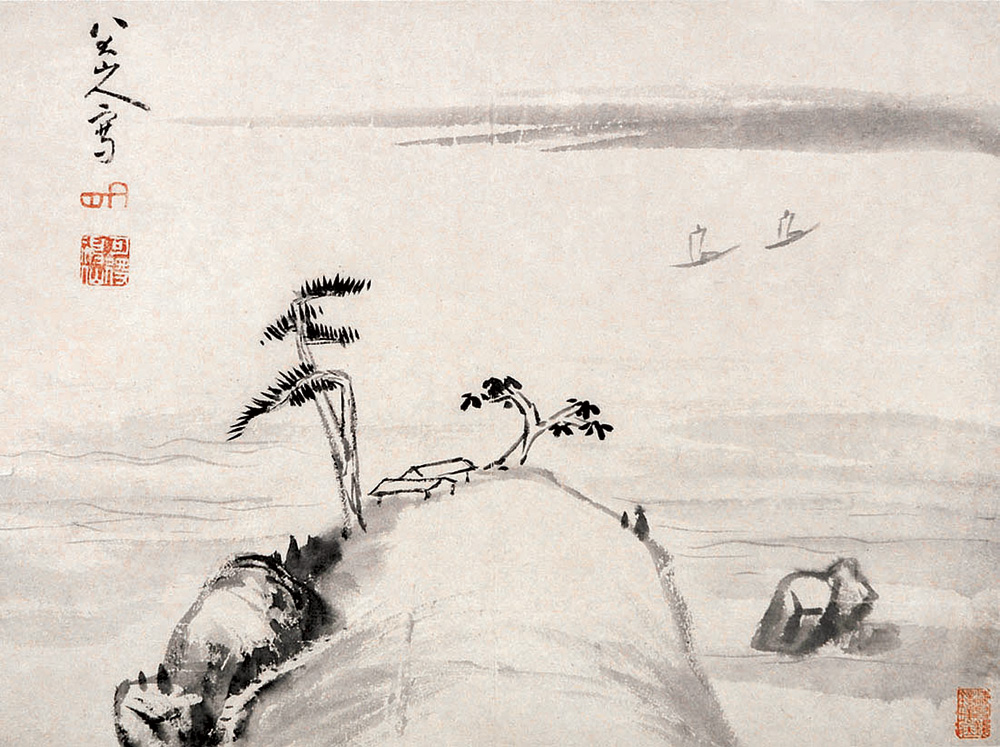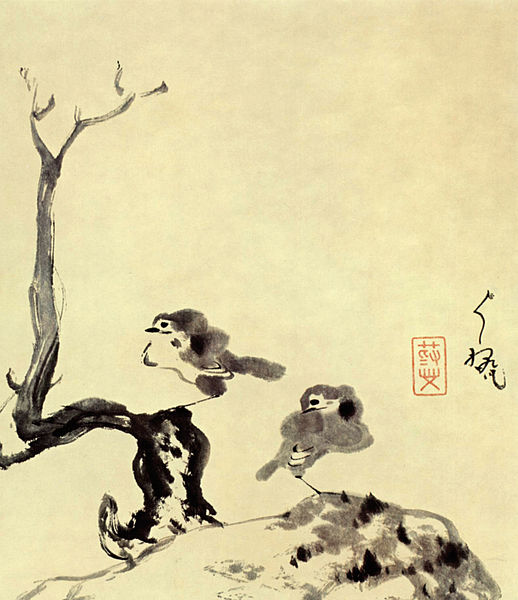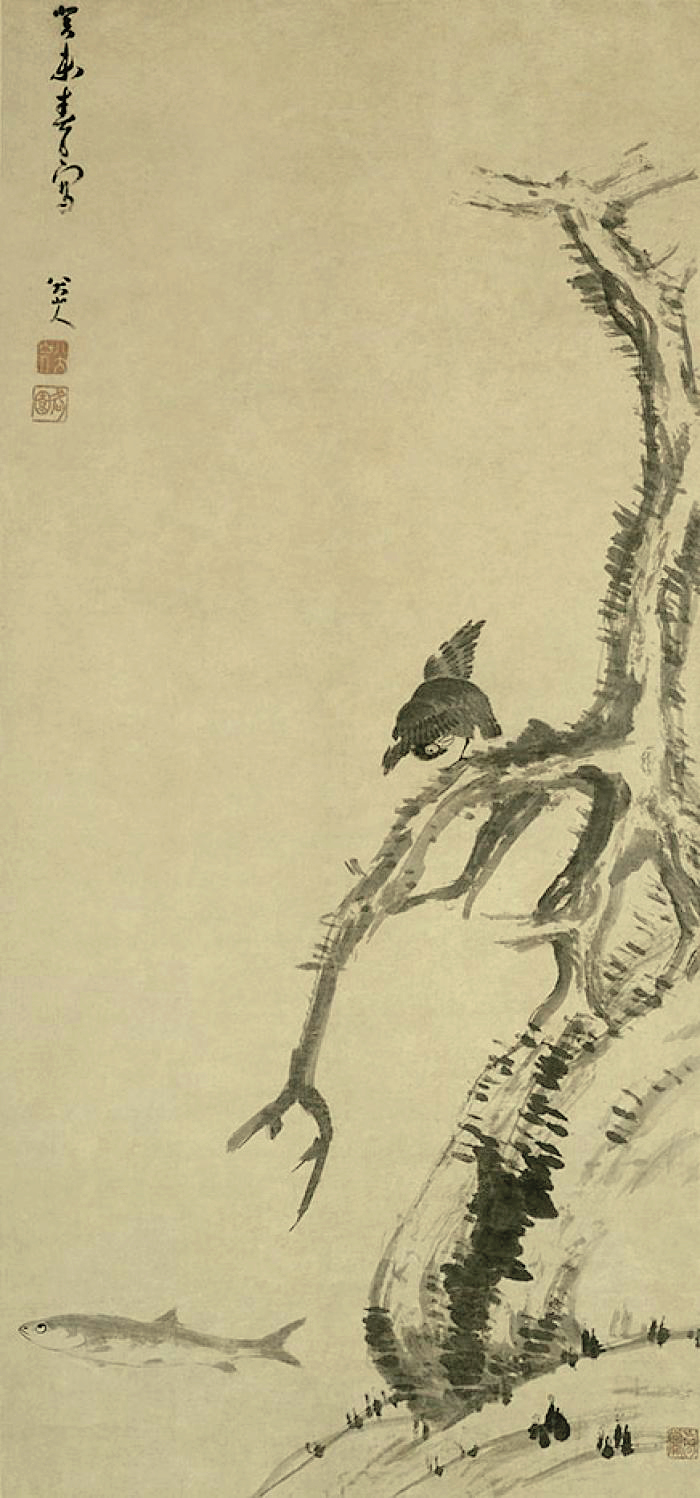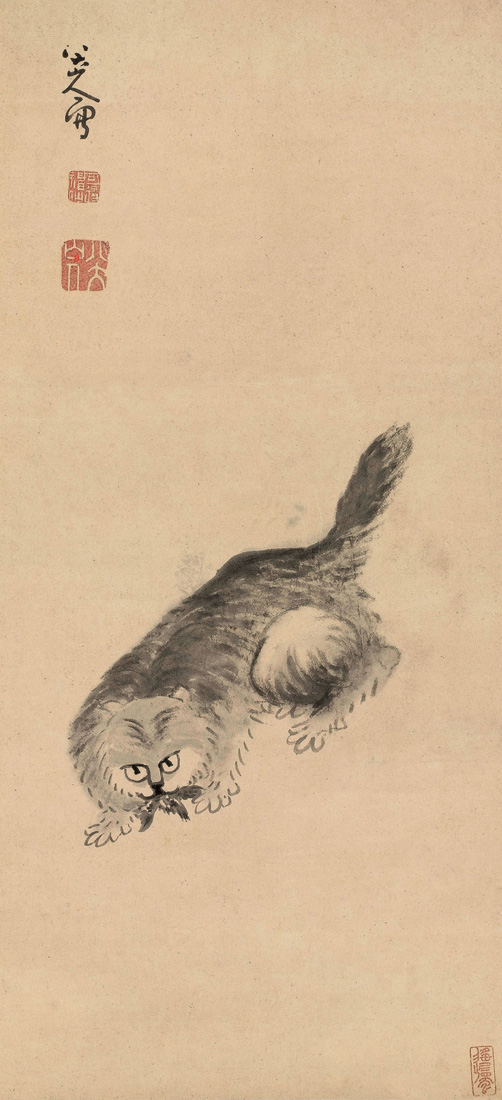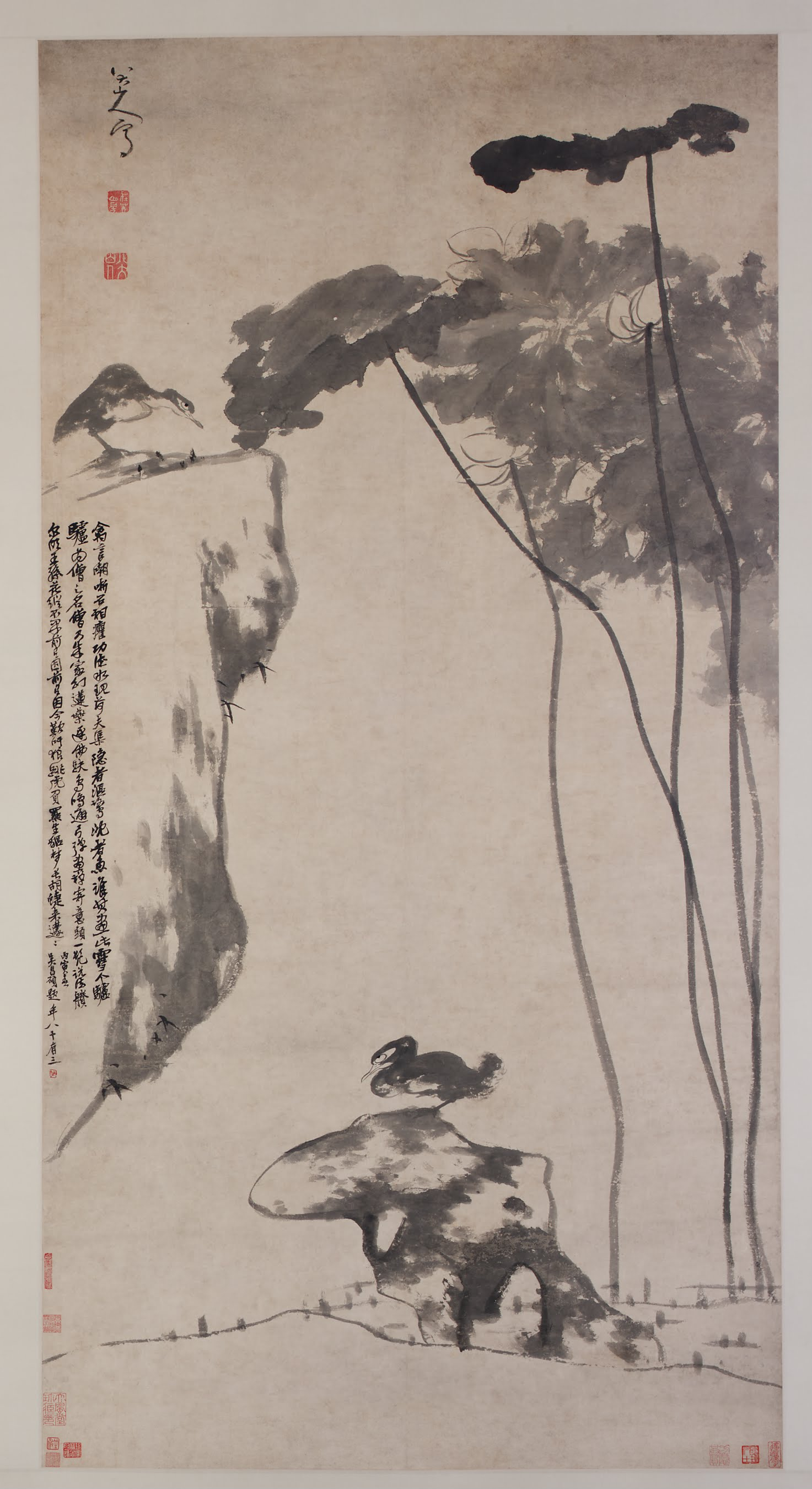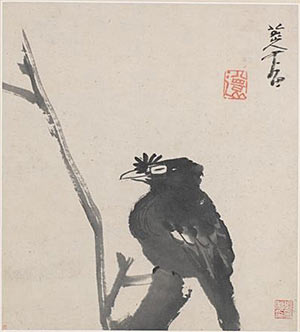Bada Shanren
Zhu Da (朱 耷Chinese, Pinyin Zhu Da, W.-G. Chu Ta, also known as Bada Shanren八大山人- Pa -ta- shan -jen; * in 1625 in Nanchang ( Jiangxi Province ), † 1705) was a Chinese painter and calligrapher of the Qing Dynasty
Life
The descendant of the Ming prince Zhu Quan was a child prodigy and began in early childhood with painting and writing poetry. After the fall of the dynasty in 1644, he fled at the age of twenty years in a Buddhist monastery and became a monk. After a 1678 nervous breakdown suffered Zhū was characteristic of a serious mental illness that led him particularly to morbidly - abrupt changes between euphoric elation and depression. One day he wrote the character " yǎ " (哑; "mute" ) on his door and said from now on no more words, although he still laughed, shouted and gesticulated. Many of his pictures, the way he used to give away, came under the influence of alcohol. When Calligraphy he should, according to a biographer, usually the arm bared and have thereby discharged animal -like sounds. A short, connected with leaving the monastery and marriage foray into the world of life end of the 1670s should be of short duration.
Work
Zhu's painting style is characterized by eccentricity. Slowly and in spiral motion he used to - to lead Brush - often unequally wet. Part, he wore mascara on so wet that blobs were that contrast with the hard times in the same picture encountered dry - brittle brush strokes.
His landscapes appear surprisingly modern with its formal restriction to a few design elements and avoiding any depth. Enigmatic affect the viewer, however, Zhu's depictions of animals: The eyes of birds he has alienated some by square or diamond- like shapes. The animals often act human when about fish and crows look at the viewer angry or small fluffy birds radiate an entirely untierische aura of self-satisfaction. While some interpreters see only about the grotesquely skinny legs of birds Zhu's charitable jokes, others suspect behind his depictions of animals hidden criticism of the Manchu domination by the Qing Dynasty.
In the 1930s, the Chinese painter Zhang Daqi went public, but were quickly debunked because of their softer, more rounded brush stroke with allegedly by Zhu's hand derived fakes.

